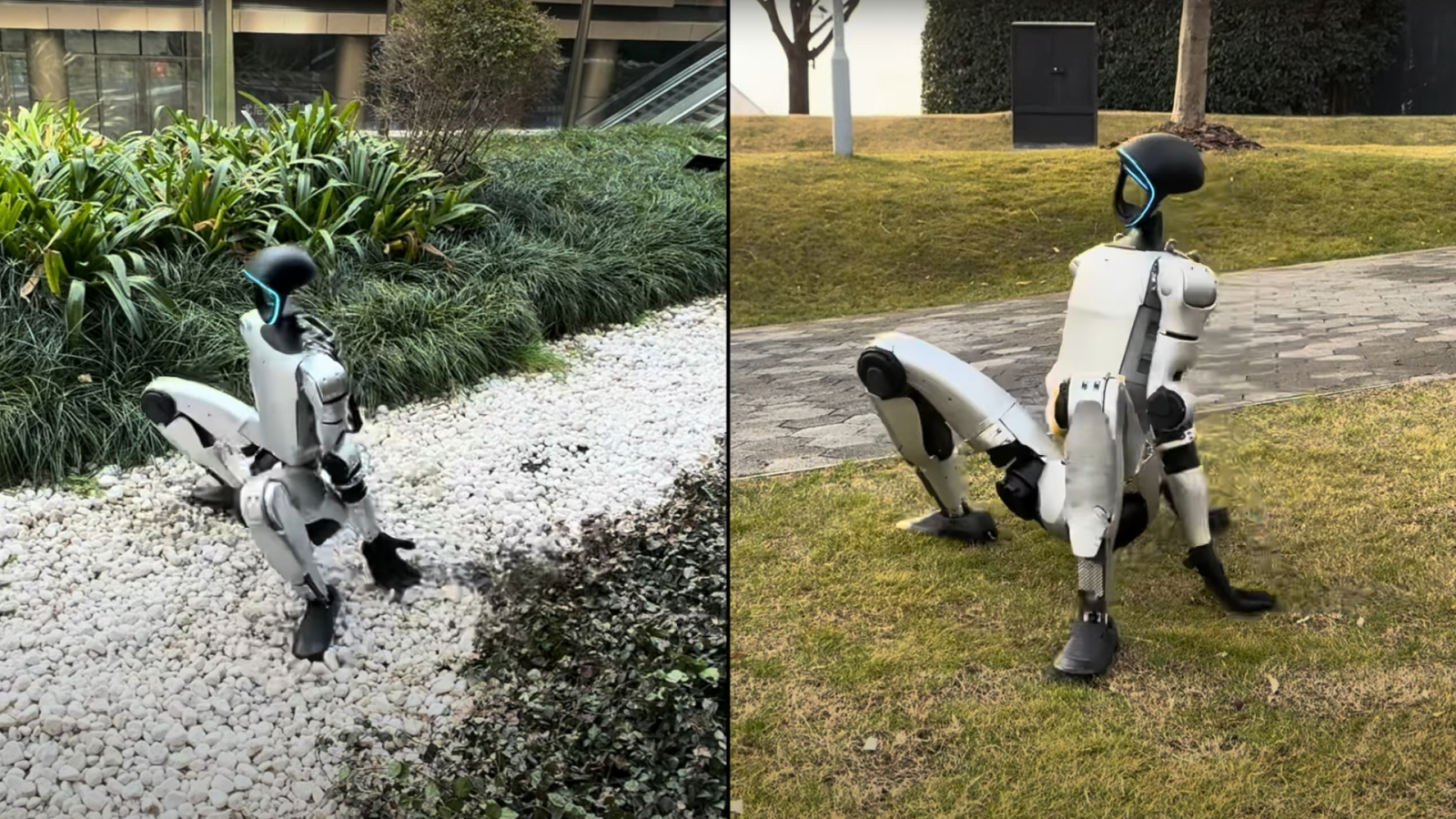When you purchase through link on our situation , we may earn an affiliate commission . Here ’s how it works .
Technologies to assist paralytic people move again have add up a long way since " Superman " actor Christopher Reeve died 10 yr ago . While a palsy " cure " stay far from reality , the pace made in the retiring decennium would make Reeve " excited , " his boy said .
electric stimulation , head - computer interface , exoskeleton and pharmaceutical therapy have proven somewhat effective at regenerate mobility and other mathematical function to paralyzed someone . Reeve , who was paralyzed from the neck down after a horse - tantalise accident in 1995 , was a committed militant for research into spinal corduroy injury until his death in 2004 .

An experimental spinal cord therapy allowed Rob Summers, 25, a paraplegic, to stand on his own for the first time in four years. CREDIT: Photo courtesy of Rob Summers.
" When my father was first injured almost 20 years ago , spinal corduroy injuryresearch was considered a stagnant end , " said Reeve ’s son , Matthew Reeve . " Since then , we ’ve made unbelievable progress . " [ Overcoming Paralysis ( Infographic ) ]
Spine stimulation
A engineering calledepidural spine stimulant , which involves implanting a twist that post electrical signals to the thorn , has proven especially good at reestablish cause to four paralyzed people . All four of the patients in the pilot visitation had complete motor spinal corduroy injuries , meaning the cheek to their muscles were break up . But two of the men also had complete motor and sensory injuries , so they lacked any sensation in the parts of their body below the story of their injuries .

The gadget " reawaken the spinal cord and reminds of its electric potential , " Matthew Reeve told Live Science . " correctly now , it ’s the most promising therapy today . "
In 2009 , a humankind who was paralyse from the thorax down after a car accident underwent OR to imbed the machine that electrically stimulate his spinal cord , which was no longer find sign from his psyche in the part of his body below the trauma . With the machine , he was able-bodied to stand and take step with aid , researchers from the University of Louisville reported in 2011 .
Since then , three more people who had been paralyse for more than two years havehad epidural spine stimulators implanted . All four individuals were able to flex their toe , ankles and knees again , scientists reported in April . The patients also see improvement in bladder , bowel and sexual mapping . [ 5 Crazy Technologies That Are overturn Biotech ]

One of those patient was Kent Stephenson of Mount Pleasant , Texas . Stephenson suffered a double-dyed motor and spinal cord harm in a Motocross accident , provide him unable to move or sense anything from the waist down .
" When I issue forth out of the hospital , they essentially gave me a bag of medicinal drug , a stretch procedure and a wheelchair — and that was it , " Stephenson said . But now , having the spinal stimulation gadget " gives me the ability to take a step forward and surmount my paralysis , " he said .
Today , the Christopher and Dana Reeve Foundation declare a new campaign , calledThe Big Idea , to raise $ 15 million to expand the clinical trial of the gimmick to an extra 36 paralyzed patients .

But it ’s not the only technology showing real hope for treating paralysis .
encephalon - computer interfaces
gimmick calledbrain - information processing system interfaces(BCIs ) — which connect the brain to a computer or extraneous gimmick , such as a prosthetic arm — have also made great leaps in treating palsy in the long time since Christopher Reeve ’s death .

By the other 2000s , researcher at Duke University and the University of Pittsburgh independently developed systems that allowed a monkey to assure a prosthetic limb with its mind . An raiment of electrode implanted in the rapscallion ’s brain recorded signal from an surface area that controls the animal ’s arm , and a computer used those signals to move a prosthetic arm .
In 2005 , a group at Brown University implanted a interchangeable scheme ( have sex as BrainGate ) into the first human patient , who was paralyzed from the neck down . Using this system , the patient was able-bodied to move a cursor on a computing machine screen door , and open and close a prosthetic branch . Since then , several more paralyzed patient have testedthe BrainGate system . In 2012 , one of them used it to control a prosthetic subdivision to take a drink .
Meanwhile , other efforts have focused on developing technology to reanimate the patient ’s own torso .

exoskeleton
While Tony Stark ’s " Ironman " causa does n’t be in reality , powered exoskeletonshave been making their way into paralysis reclamation for years now .
Attempts to make wearable robotic lawsuit go steady back to the 1970s , but advancement in motor , battery and detector technology have made such suits a literal promise in palsy rehabilitation .

In 2010 , Richmond , California - based Berkeley Bionics ( now calledEkso Bionics ) introduced an exoskeleton cry eLEGS , short for Exoskeleton Lower Extremity Gait System ( now call Ekso ) . Battery - power motors labor the leg , and sensors in the twist trigger it to take step when the user shift his or her weight . In 2013 , eLEGSentered clinical test at four website around the country , but it is not yet commercially available , its makers say .
Researchers at Vanderbilt University in Nashville created the Indego Exoskeleton , which has allowed people with paralysis to stand upright , sit and even take the air . They began testing the gimmick in 2010 at a rehab midpoint in Atlanta . Parker Hannifin Corp. , a Mayfield Heights , Ohio - base company that makes motion and command technology , insert a commercial-grade reading of the Indego Exoskeleton in June .
Meanwhile , the University of Tsukuba in Japan and the robotics party Cyberdyne developed theHybrid Assistive Limb(HAL ) . They jump testing the suite on paralytic masses in 2012 at hundreds of Nipponese medical founding . In August 2013 , the European Commission licence HAL for use in Europe , making it the humans ’s first clinically certify aesculapian treatment robot .

lately , some researchers have even undertake to combine head - computer interface and exoskeletons . In a highly anticipateddemonstration at the World Cupin Brazil in June , a young paraplegic human being in a brain - controlled exoskeleton kick a soccer ball during the possible action ceremonial . The gentleman wore a cap of electrode that memorialise signaling from his brain and sent them to a laptop computer - size computing machine put on on his back that triggered the exoskeleton to carry out the kick . However , the technology does not yet enable paralyzed somebody to walk again under their own brain ascendancy .
cure palsy may still be a distant dream , but Matthew Reeve said his beginner would have been " fabulously excited " by all that ’s been reach in the retiring X .
" We ’re one step closer to his vision of a world of empty wheelchair , " he said .











